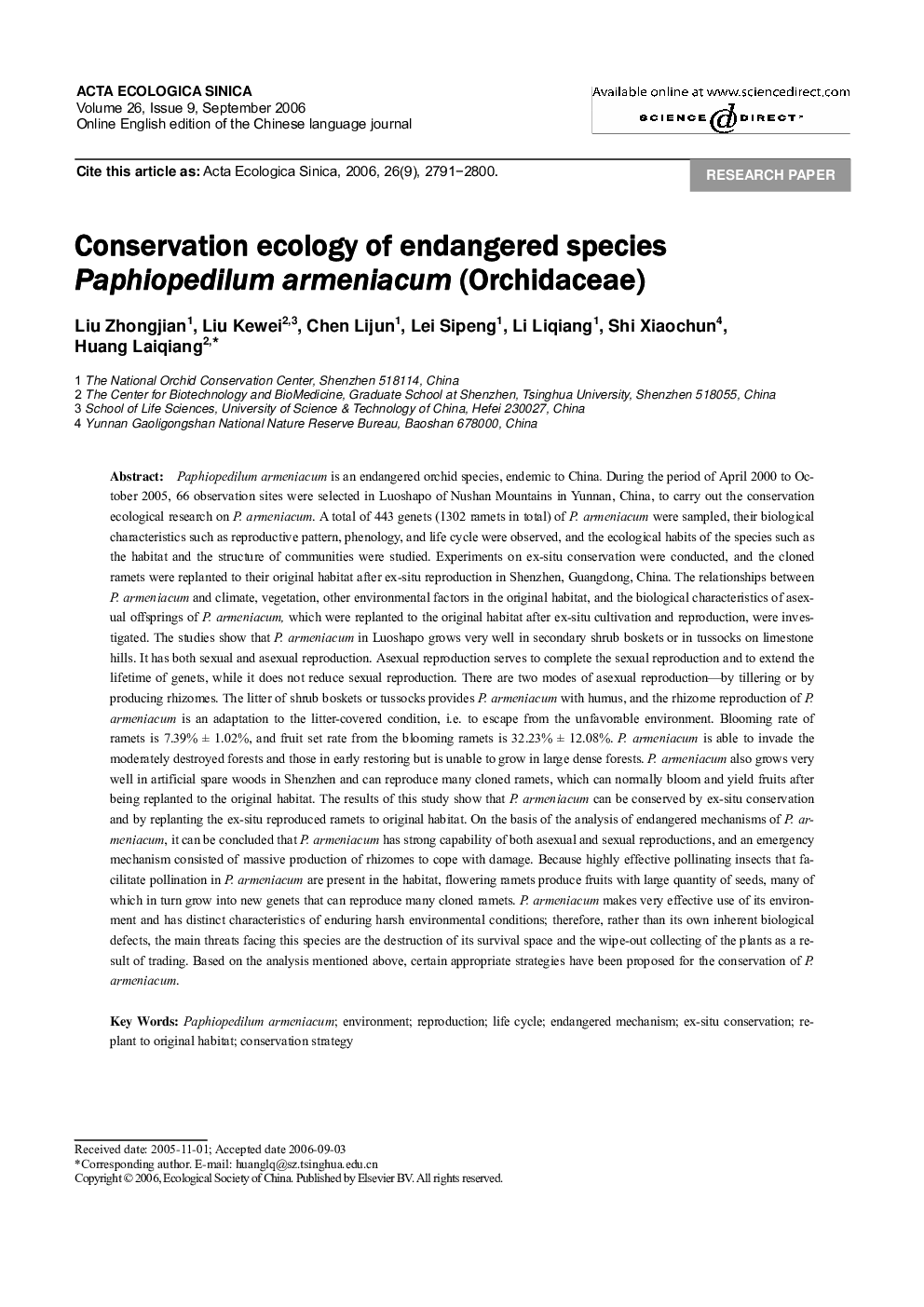| Article ID | Journal | Published Year | Pages | File Type |
|---|---|---|---|---|
| 4380573 | Acta Ecologica Sinica | 2006 | 9 Pages |
Paphiopedilum armeniacum is an endangered orchid species, endemic to China. During the period of April 2000 to October 2005, 66 observation sites were selected in Luoshapo of Nushan Mountains in Yunnan, China, to carry out the conservation ecological research on P. armeniacum. A total of 443 genets (1302 ramets in total) of P. armeniacum were sampled, their biological characteristics such as reproductive pattern, phenology, and life cycle were observed, and the ecological habits of the species such as the habitat and the structure of communities were studied. Experiments on ex-situ conservation were conducted, and the cloned ramets were replanted to their original habitat after ex-situ reproduction in Shenzhen, Guangdong, China. The relationships between P. armeniacum and climate, vegetation, other environmental factors in the original habitat, and the biological characteristics of asexual offsprings of P. armeniacum, which were replanted to the original habitat after ex-situ cultivation and reproduction, were investigated. The studies show that P. armeniacum in Luoshapo grows very well in secondary shrub boskets or in tussocks on limestone hills. It has both sexual and asexual reproduction. Asexual reproduction serves to complete the sexual reproduction and to extend the lifetime of genets, while it does not reduce sexual reproduction. There are two modes of asexual reproduction-by tillering or by producing rhizomes. The litter of shrub boskets or tussocks provides P. armeniacum with humus, and the rhizome reproduction of P. armeniacum is an adaptation to the litter-covered condition, i.e. to escape from the unfavorable environment. Blooming rate of ramets is 7.39% ± 1.02%, and fruit set rate from the blooming ramets is 32.23% ± 12.08%. P. armeniacum is able to invade the moderately destroyed forests and those in early restoring but is unable to grow in large dense forests. P. armeniacum also grows very well in artificial spare woods in Shenzhen and can reproduce many cloned ramets, which can normally bloom and yield fruits after being replanted to the original habitat. The results of this study show that P. armeniacum can be conserved by ex-situ conservation and by replanting the ex-situ reproduced ramets to original habitat. On the basis of the analysis of endangered mechanisms of P. armeniacum, it can be concluded that P. armeniacum has strong capability of both asexual and sexual reproductions, and an emergency mechanism consisted of massive production of rhizomes to cope with damage. Because highly effective pollinating insects that facilitate pollination in P. armeniacum are present in the habitat, flowering ramets produce fruits with large quantity of seeds, many of which in turn grow into new genets that can reproduce many cloned ramets. P. armeniacum makes very effective use of its environment and has distinct characteristics of enduring harsh environmental conditions; therefore, rather than its own inherent biological defects, the main threats facing this species are the destruction of its survival space and the wipe-out collecting of the plants as a result of trading. Based on the analysis mentioned above, certain appropriate strategies have been proposed for the conservation of P. armeniacum.
